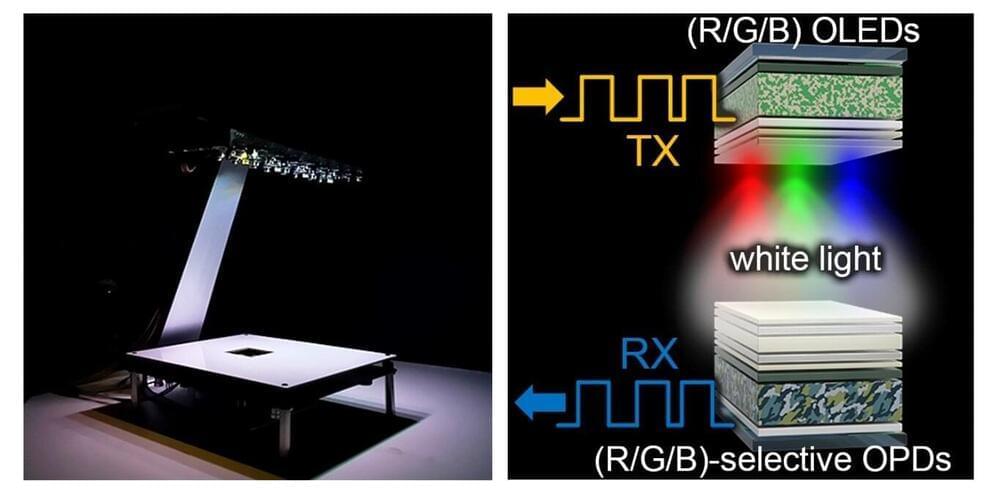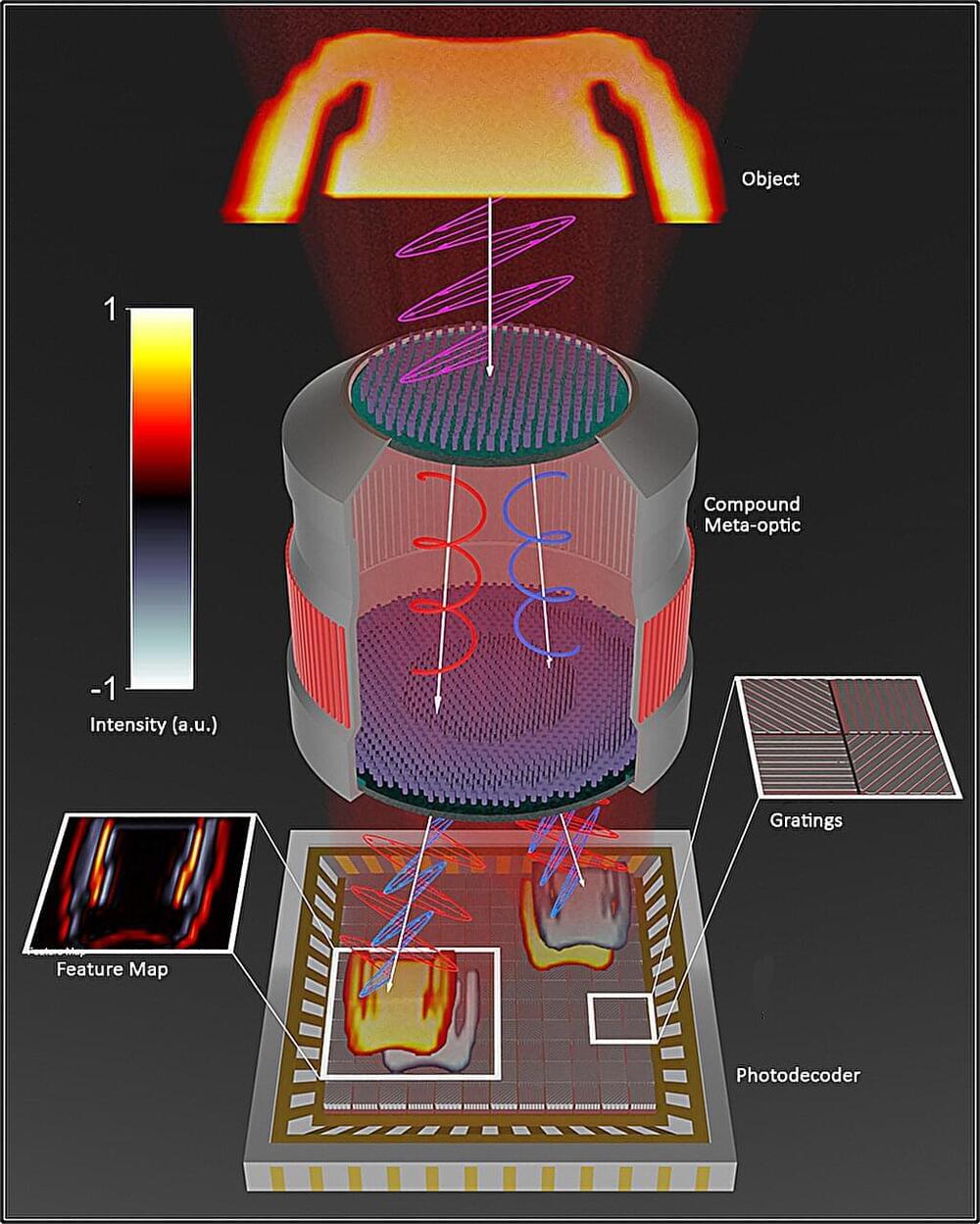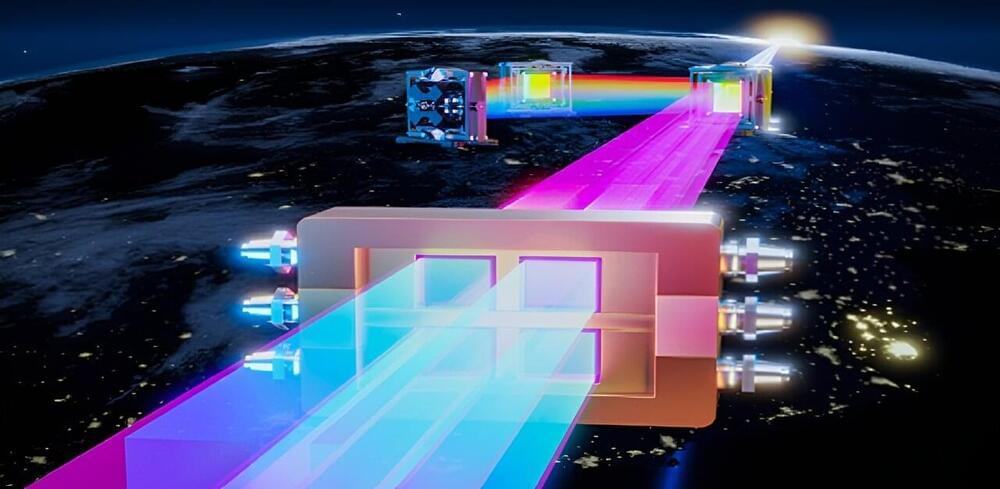A Trail of Bits blog recently exposed this vulnerability.
Today’s revelations unveil a creative chink in various GPUs (Apple, Qualcomm, AMD), enabling substantial data pilfering from graphics card memory.
A Trail of Bits blog recently exposed this vulnerability.
Today’s revelations unveil a creative chink in various GPUs (Apple, Qualcomm, AMD), enabling substantial data pilfering from graphics card memory.

New method captures better thermal details, helpful for self-driving, identifying materials, and enhancing security measures.
Scientists have created a novel technology using meta-optical devices to conduct thermal imaging. Like a pair of glasses, this device does thermal imaging and can also identify the objects being imaged.
This expands the potential applications of thermal imaging in various fields, including security, thermography, medical imaging, and remote sensing.
“Our method overcomes the challenges of traditional spectral thermal imagers, which are often bulky and delicate due to their reliance on large filter wheels or interferometers,” said Zubin Jacob, research team leader from Purdue University.

Li-fi, a communication technology harnessing visible light for data transmission, has a potential to surpass Wi-Fi’s speed by more than 100 times and boasts a high bandwidth, facilitating the simultaneous transmission of copious information. Notably, Li-fi ensures robust security by exclusively transmitting data to areas illuminated by light.
Most important, it capitalizes on existing indoor lighting infrastructure, such as LEDs, eliminating the need for separate installations. However, implementing visible light communication (VLC) in practical lighting systems poses an issue of diminished stability and accuracy in data transmission.
Recently, a collaborative team led by Professor Dae Sung Chung, from the Department of Chemical Engineering at Pohang University of Science and Technology (POSTECH), with researcher Dowan Kim, Professor Dong-Woo Jee and Hyung-Jun Park from the Department of Intelligence Semiconductor Engineering at Ajou University, and Professor Jeong-Hwan Lee from the Department of Materials Science and Engineering at Inha University, succeeded in utilizing indoor lighting for wireless communication by reducing light interference with a novel light source. Their findings were published in Advanced Materials.

ARTIFICIAL intelligence is being used by crooks to part you from your cash – but there are ways to stay safe.
Security experts are warning internet users to be on high alert as criminals use AI to target their victims.
AI has plenty of great uses, from giving you cooking advice to generating funny “stickers” inside WhatsApp.

Governor Kristi Noem has proposed a $6 million investment in a new Center for Quantum Information Science & Technology (C-QIST) in her recommended budget for the upcoming fiscal year.
According to details from the proposed budget, the center, a collaborative effort between Dakota State University, South Dakota School of Mines & Technology, South Dakota State University, and the University of South Dakota, aims to position the state as a leader in this emerging field with the potential to revolutionize everything from national security to healthcare.
The governor mentioned the potential of quantum computers to solve intractable problems as a reason for pursuing a quantum computing center, according to South Dakota Searchlight.

From surveillance to defense to AI/ML virtualization, and it’s more compact and energy efficient. Oh and let’s not forget the medical imaging applications. I just wonder how long until it’s put into effect.
A front-end lens, or meta-imager, created at Vanderbilt University can potentially replace traditional imaging optics in machine-vision applications, producing images at higher speed and using less power.
The nanostructuring of lens material into a meta-imager filter reduces the typically thick optical lens and enables front-end processing that encodes information more efficiently. The imagers are designed to work in concert with a digital backend to offload computationally expensive operations into high-speed and low-power optics. The images that are produced have potentially wide applications in security systems, medical applications, and government and defense industries.
Mechanical engineering professor Jason Valentine, deputy director of the Vanderbilt Institute of Nanoscale Science and Engineering, and colleagues’ proof-of-concept meta-imager is described in a paper published in Nature Nanotechnology.

Ultra-intense ultrashort lasers have a wide-ranging scope of applications, encompassing basic physics, national security, industrial service, and health care. In basic physics, such lasers have become a powerful tool for researching strong-field laser physics, especially for laser-driven radiation sources, laser particle acceleration, vacuum quantum electrodynamics, and more.
A dramatic increase in peak laser power, from the 1996 1-petawatt “Nova” to the 2017 10-petawatt “Shanghai Super-intense Ultrafast Laser Facility” (SULF) and the 2019 10-petawatt “Extreme Light Infrastructure—Nuclear Physics” (ELI-NP), is due to a shift in gain medium for large-aperture lasers (from neodymium-doped glass to titanium:sapphire crystal). That shift reduced the pulse duration of high-energy lasers from around 500 femtoseconds (fs) to around 25 fs.
However, the upper limit for titanium: sapphire ultra-intense ultrashort lasers appears to be 10-petawatt. Presently, for 10-petawatt to 100-petawatt development planning, researchers generally abandon the titanium: sapphire chirped pulse amplification technology, and turn to optical parametric chirped pulse amplification technology, based on deuterated potassium dihydrogen phosphate nonlinear crystals. That technology, due to its low pump-to-signal conversion efficiency and poor spatiotemporal-spectral-energy stability, will pose a great challenge for the realization and application of the future 10–100 petawatt lasers.


TOKYO — Nikon, Sony Group and Canon are developing camera technology that embeds digital signatures in images so that they can be distinguished from increasingly sophisticated fakes.
Nikon will offer mirrorless cameras with authentication technology for photojournalists and other professionals. The tamper-resistant digital signatures will include such information as date, time, location and photographer.

In the modern digital age, where data flows freely and sensitive information is constantly in transit, secure communication has become essential. Traditional encryption methods, while effective, are not immune to the evolving threat landscape. This is where quantum key distribution (QKD) emerges as a revolutionary solution, offering unmatched security for transmitting sensitive data.
Image Credit: asharkyu/Shutterstock.com
The idea of quantum key distribution (QKD) dates back to Stephen Wiesner’s concept of quantum conjugate coding at Columbia University in the 1970s. Charles H. Bennett later built on this idea, introducing the first QKD protocol, BB84, in the 1980s, using nonorthogonal states. Since then, it has matured into one of the most established quantum technologies, commercially available for over 15 years.